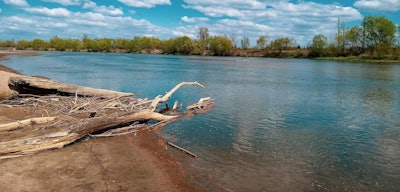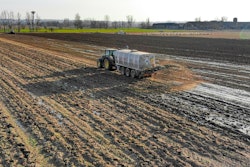
More than 80% of the U.S. faces abnormally dry conditions, the biggest portion so far this century, and the recentescalation of dryness across several key grain statesraises risks for the 2023 harvest, reportsReuters.
According to theU.S. Drought Monitor, a record-large 82% of the country is experiencing abnormal dryness, slightly more than 2012’s high of 81%.
Some 59% of the country has earned official drought designation, a share seen in just a handful of other weeks, mostly in late 2012.
In the Midwest, September-October may contend for top 10 driest ever,
Some 15% of the crop-heavy Midwest is in severe drought or worse, the most since August 2021 but well below the 34% observed the same week in 2012. However, the recent spread of dryness is alarming, as Midwest drought coverage was just 10% in mid-September versus 43% this week.
Extreme fall dryness is more concerning for the U.S. winter wheat crop since there is less recovery time.
LowMississippi River prompts limits in key U.S. ports
The dry fall weather is still impacting the Mississippi River, which has reached historically low levelsseverely disrupting grain movementalong the waterway.
"Serious concerns” over critically low water levels in the Mississippi River system led port authorities to limit vessel drafts near a key export hub, potentially adding a further headache for shippers already contending with delays and skyrocketing costs, reportsBloomberg.
The depth of ships’ drafts, or the distance between the waterline and the deepest point of the boat, are now limited to 41 feet upriver of the port of Baton Rouge, the nation’s eighth-largest by tonnage, theU.S. Coast Guardsaid late Friday.
That’s down from 45 feet, a level at which vessels are encountering problems as spreading drought in the Midwest dries up the waterway.
As of Saturday morning, there were four waterway closures on the river, the Coast Guard said, with a queue of more than 2,700 barges and vessels waiting at points in Mississippi, Tennessee and Kentucky.
On Friday, the Coast Guard said there were more than 1,800 barges and vessels stuck along the river because of low water levels.
The US Army Corps of Engineers has been dredging various sections of the Mississippi and Ohio rivers to open up the channels.






















